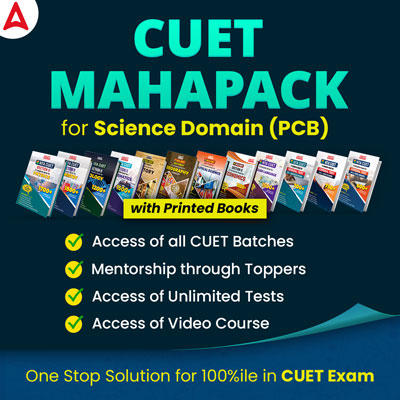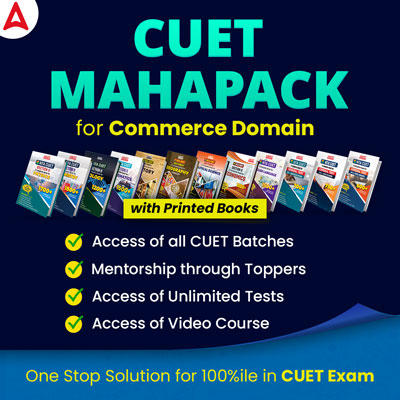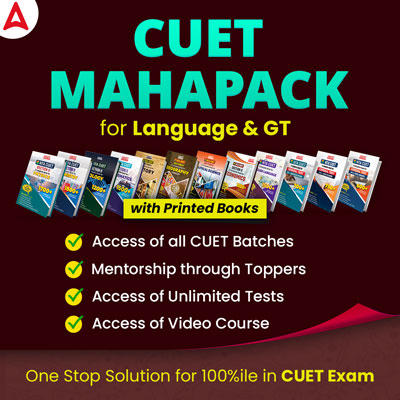Table of Contents
HSC Chemistry Paper 2024
The Maharashtra Board conducted the HSC Chemistry paper 2024 in offline mode on 29 February 2024. The Maharashtra HSC chemistry exam paper was held in the morning shift from 11 AM to 2 PM. The Maharashtra Board Class 12 Chemistry exam paper is important for every science stream student. The HSC Chemistry paper 2024 for the Maharashtra state board is being provided here for students along with the solutions in PDF form.
The Maharashtra HSC question paper is held for 70 marks. The rest of the 30 marks is kept aside for the practical exam. The HSC chemistry paper 2024 consists of different types of questions ranging from multiple choice objective questions to concept-based long answer-type questions. To help students prepare for the board exam in a better way, we have provided the model question paper 2024 and PYQs (Previous Year Questions) along with the solutions.
Check: Maharashtra HSC Timetable 2024
Maharashtra HSC Chemistry Question Paper 2024
The Maharashtra HSC Chemistry Question Paper 2024 is released by the Maharashtra State Board of Secondary and Higher Secondary Education (MSBSHSE) after the conduction of the exam on 29 February. The Maharashtra HSC Chemistry Question Paper 2024 is based on the latest exam pattern released by the Maharashtra Board. Students who want to solve all the questions of the HSC Chemistry question paper must cover all the topics of the Class 12th chemistry.
The Maharashtra HSC Chemistry question paper along with the solutions is provided by us. The questions asked in the Maharashtra HSC question paper often resembles the questions present in model papers and previous year papers. That is why, it is important to cover those questions in the final days of the exam preparation. As per the Maharashtra Board instructions, the calculators are not allowed for the HSC Chemistry exam paper.
Chemistry Paper 2024 HSC Maharashtra Overview
The Chemistry paper 2024 HSC Maharashtra was held only for 3 hours with no extra time for reading the question paper. The Maharashtra HSC exam paper consists a total of 23 questions. The official answer key 2024 for the Maharashtra HSC chemistry exam is expected to be released in April 2024. The highlights of the Maharashtra HSC chemistry paper 2024 is given below.
| Particulars | Details |
| Exam Conducting Body | Maharashtra State Board of Secondary and Higher Secondary Education (MSBSHSE) |
| Examination Name | Maharashtra Board HSC Examination |
| Academic session | 2023-24 |
| Subject | Chemistry |
| HSC Chemistry paper 2024 marks | 70 Marks |
| Exam Mode | Offline |
| HSC Chemistry model paper release status | Released |
| HSC 12th Chemistry paper release date | 29 February 2024 |
| Total Questions | 31 |
| Types of questions | Objective Questions & Subjective Questions |
| Maharashtra Board HSC Chemistry Exam date | 29 February 2024. |
| Official Website | https://mahahsscboard.in/ |
HSC Chemistry Paper 2024: Exam Pattern
The exam pattern of the Maharashtra Board HSC exam paper is necessary to know. The HSC chemistry exam is held for 70 marks. The Maharashtra HSC board paper 2024 consists of 4 sections from A to D. The exam paper of the Maharashtra HSC Chemistry subject consists questions of different types, including multiple choice questions to long answer-type questions. The detailed exam pattern is given below.
| Section | Question Type | No. of Questions | Compulsory Questions | Marks per Question |
| A | MCQs, Very short answer-type questions | 2 (18 sub-questions) | 18 | 1 |
| B | short answer-type questions | 12 | 8 | 2 |
| C | short answer-type questions | 12 | 8 | 3 |
| D | long answer-type questions | 5 | 3 | 4 |
HSC Chemistry Paper 2024: Answer Key
The answers for the MCQs and the very short answer-type questions asked in the Maharashtra HSC Chemistry board paper is provided below. The answers provided here are fully true and students can use the answers given in the answer key to match their responses.
Q.1 MCQs
(i) C
(ii) B
(iii) B
(iv) B
(v) C
(vi) D
(vii) D
(viii) B
(ix) D
(x) A
Q.2 Very Short Answer-type Questions
(i) Write the name of metal nanoparticle used to remove E.coli bacteria from water
Ans: Silver
(ii) Write the name of reduction product formed when ethyl cyanide is treated with sodium and alcohol
Ans: Mendius reduction
(iii) Complete the reaction- CH3CH2Cl–>AgCN(alc)
Ans: CH3CH2Cl–>AgCN(alc) A major-Na-Hg/alcohol B
(iv) The effective atomic number of cobalt in [Co(NH3)6]3+ is
Ans: 36
(v) The compounds of Ti4+ ions are colorless due to
Ans: The ions Ti4+ have completely empty d-orbitals ie, no unpaired electrons are present. Thus, their salts are colourless, as d-d transitions are not possible.
(vi) Write the SI unit of moral conductivity
Ans: mol 1 = S . m 2
(vii) Write the sign convention of the work done during expansion of gas
Ans: As we know, Work Done = PΔV
Work done on the gas = Negative
Work done by the gas = Positive
(viii) Write the condition of reverse osmosis
Ans: When pressure on the solution side is increased, reverse osmosis will take place
Imp Questions of Chemistry Class 12 HSC 2024
The important questions for the Class 12 HSC chemistry board paper 2024 is given below along with the solutions.
Q) The following crystal systems contain 4 Bravais lattices?
a. cubic b. tetragonal c. orthorhombic d. monoclinic
Ans: c
Q) A paired cation-anion vacancy is called……
a. Schottky defect b. Frenkel defect c. impurity defect d. vacancy defect
Ans: a
Q) The unit cell of a simple cubic system has atoms at the eight corners. Hence, number of atoms in an unit cell is
a. 8 b. 3 c. 1 d. 2
Ans: c
Q) The solubility of a gas in water
a. decreases with increase in temperature
b. increases with increase in temperature
c. decreases with decrease in temperature
d. is not affected by temperature
Ans: a
Q) The colligative properties of solutions
a. depend on nature of solute particles
b. do not depend on number of solute particles
c. do not depend on dissociation of solute in solvent
d. depend on number of solute particles
Ans: d
Q) Which of the following statements is applicable for 0.1M urea solution and 0.1M sucrose solution?
a. osmotic pressure of urea solution is greater than that of sucrose solution
b. osmotic pressure of sucrose solution is greater than that of the urea solution
c. sucrose solution is not isotonic with urea solution
d. both the solutions have the same osmotic pressure
Ans: d
Q) The solubility of Ag Br in water is 1.20 x 10^-5 mol dm^-3. Calculate the solubility product of Ag Br
Ans: Ksp = 1.44 x10^-10
Q) The value of 1dm^3 bar is ………..
a) 10 J b) 10^2 J
c) 10^3 J d) 10^-2 J
Ans: b
Q) The work done in vacuum when 300 m mole of an ideal gas expands until its volume is increased by 2.3 dm^3 at 1 bar pressure is….… mole.
a)Zero b) One
c) Two d) Three
Ans: a
Q) 0.022 kg of CO2 is compressed isothermally and reversibly at 298 K from initial pressure of 100 kPa
when the work obtained is 1200 J, calculate the final pressure.
Ans: 263.4kPa
Most Important Questions Chemistry Class 12 Maharashtra Board 2024 PDF
The PDF of the chemistry important questions for the Class 12 Maharashtra state board is provided below. The PDF contains sample questions along with the answers for the questions. Students should go through these questions to boost their confidence level and conceptual clarity.
Maharashtra HSC 2024 Chemistry Question Bank
Chemistry Important Questions Class 12 State Board PYQ
The previous year question papers are must for students to solve days before the final examination. Solving the chemistry HSC PYQs, students can increase their exam performance. The chemistry previous year question papers for the Maharashtra Class 12 board exam is given hereunder.
Maharashtra HSC Chemistry Question Paper 2017
Maharashtra HSC Chemistry Question Paper 2018
Maharashtra HSC Chemistry Question Paper 2019
Maharashtra HSC Chemistry Question Paper 2020
Maharashtra HSC Chemistry Question Paper 2022
Maharashtra State Board HSC Chemistry Board Paper 2024 Analysis
The Maharashtra Board Class 12 Chemistry Paper 2024, in the opinion of the students, was of the moderate difficulty level. The paper was mostly devoted to organic chemistry, with inorganic and physical chemistry coming in second and third, respectively. There were no questions that weren’t included in the curriculum; the question distribution followed the format of the model papers.
The expert’s viewpoint aligns with that of the students. The subject matter expert states that “the paper was in a moderate range and was not lengthy.” It’s likely that the paper was simple for the students that practiced the reactions. There were no unnecessary questions, and the wording and placement of the questions followed the syllabus.



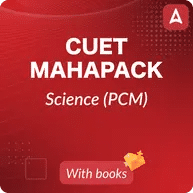


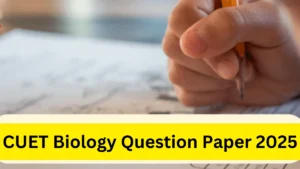 CUET Biology Previous Year Question Pape...
CUET Biology Previous Year Question Pape...
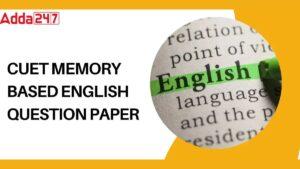 CUET English Question Paper (2024, 2023)...
CUET English Question Paper (2024, 2023)...
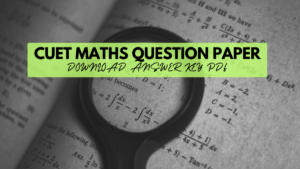 CUET Maths Previous Year Question Paper ...
CUET Maths Previous Year Question Paper ...

